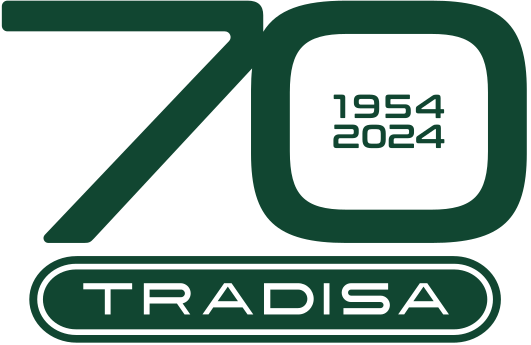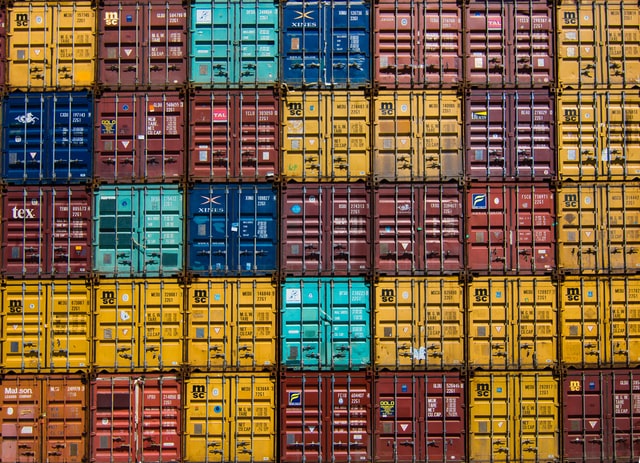Reverse logistics is the stage after the delivery of products in the supply chain, in which the waste originated by the production activity is recovered, recycled or eliminated. In other words, reverse logistics is a planning and control strategy that creates product collection channels for subsequent exchange, repair, recycling, reuse or destruction.
In this article, we will tell you everything you need to know about reverse logistics, what it is for, the different types that exist, its benefits, and how to carry it out efficiently.
What is the supply chain?
To understand the concept of reverse logistics, it is first necessary to refer to the supply chain. The supply chain consists of the process that is generated from the moment an order for a product or service is placed until its final delivery. In other words, it encompasses the planning, execution and control of all the operations involved in the process. Thus, the chain is made up of different people, suppliers and companies.
Efficient supply chain management is key, both for the quality of the product or service offered and for the profitability of the business. Nowadays, companies are influenced by changes in global consumption models and, for this reason, they must adapt to them and establish efficient integrated management in their production chain.
How does reverse logistics work?
In order to explain how reverse logistics works, it is important to first clarify the difference between conventional logistics, also known as direct logistics, and reverse logistics. Conventional logistics is the one that moves products or services from the manufacturer to the end user. On the other hand, reverse logistics, as its name indicates, is carried out inversely to conventional logistics, that is, it takes the merchandise from the final consumer to the manufacturer.
Although both logistics develop a process of transferring goods, the points of origin and end are reversed, which implies great differences in their management. Direct logistics can more easily control the quality and quantity of the product being shipped. In contrast, reverse logistics is a more complex process, which involves a series of steps that are key to optimising management and reducing the costs involved in collecting the products.
Reverse logistics is responsible for recovering packaging and waste, as well as excess inventory, user returns or obsolete goods, in order to reuse them as inputs for future goods or eliminate them. This process begins when the customer decides to return a product, and contacts the company to arrange the return. Generally, the consumer chooses the method of return, and then the company arranges the transport for the return. For the whole procedure to be efficient, it is important that the product being returned has the necessary visibility so that the manufacturer can record its location throughout the return process. Once the goods reach the manufacturer, they are tested, and then recycled, repaired or disposed of, as appropriate.
What is it for?
Firstly, reverse logistics is positioned as a fundamental tool in today’s world and its already established climate crisis: around the world we can see how awareness of the need to care for the environment and its resources is on the rise. In line with this, societies are becoming increasingly aware of the imperative of reducing the waste they generate. In this sense, reverse logistics adapts to these needs and urgencies, through waste management and, with the reuse of waste from production chains, presents an alternative for the environment. While this aspect may have seemed secondary a few years ago, it is important for today’s companies to understand that not having reverse logistics in place can result in damage to their image or reputation. It is also worth noting that an efficient implementation of reverse logistics not only implies a reduction of environmental impact, but also enables cost savings, and presents an optimal management of time and resources.
At the same time, due to the increase in e-commerce and consumer demands today, having an efficient reverse logistics system in place is nowadays a key strategy for companies, which have to deal with the possibility that a customer may not want the product they received, and may want to return it. It is because of this and the large number of benefits it offers that interest in this type of logistics has increased in recent times and has become a differential that consumers celebrate and that businesses have been able to take advantage of as a unique opportunity to attract more users. But for it to be effective, the premise must never be forgotten: reverse logistics must be fast and economical to guarantee a good shopping experience for customers.
It should also be noted that the infrastructure necessary to carry out the management of goods in the form of returns is the same as for other operations, but there are differences in the planning and control of the processes. This is because reverse logistics involves remunerating the customer for the purchase of a new product, while recycling another product. As already mentioned, reverse logistics deals not only with returned products, but also with excess inventory, unused products or seasonal inventories.
Benefits of reverse logistics
We have already seen that reverse logistics adds value to a company. Now let’s take a closer look at its benefits:
Care for the environment: as mentioned above, reverse logistics reduces the environmental impact thanks to the recycling and reuse of goods.
Cost reduction due to savings in the purchase of raw materials: by recycling or reusing materials, the company reduces its costs thanks to savings in the purchase of new raw materials, as it creates them with waste that has had cycles of use. In turn, the overall costs of the production chain are minimised through the reuse of materials.
Improves the consumer’s shopping experience: Reverse logistics creates a win-win situation for both the end consumer and the supplier. By giving the customer the possibility to return products through a simple, fast and efficient process, the relationship is strengthened.
It improves the company’s image: users can value the contribution to the environment that the supplier makes by reusing or recycling the product. They can also value the fact that the company complies with current legislation and standards. In this way, existing customers are retained, and there is also the possibility of attracting new customers by valuing the company.
Efficient stock control: Reverse logistics implies a need for greater planning and control in order to obtain clarity in the inventory, which generates less margin for error in relation to stock control, and consequently, less unnecessary costs.
Obtaining valuable information: the return of products provides the company with information on what the consumer wants, and by knowing the consumer better, the company can take advantage of this information to correct aspects of the supply chain process or products that need to be improved.
Disadvantages of reverse logistics
Although we can see that reverse logistics offers a multiplicity of advantages, we must know that it also has some disadvantages. We will tell you what they are:
High costs: in order to manage reverse shipments, a series of mechanisms are needed that imply high costs. In addition, in cases of returns of small quantities, it is possible that the cost of reverse logistics is not amortised, as it may not make sense to reuse a small quantity.
Increased workload: Reverse logistics involves almost all areas of the company. This means that more work and training, if necessary, is required. At the same time, an extra team of specialised people is needed to control the returns, and to inspect all materials individually and methodically.
Potential for more incidents: Without the necessary help or expertise, a large number of incidents can occur in the supply chain process. Therefore, a much more exhaustive planning and control is needed than in conventional logistics.
Modalities of reverse logistics
There are two types of reverse logistics:
Reverse logistics of waste: its main objective is to reduce the environmental impact. This type of reverse logistics involves the recycling processes of discarded products for their use as new raw material, or for their destruction.
Reverse logistics of returns: this modality involves all the processes involved in processing the return of a product from the end consumer to the manufacturer, that is, from the point of distribution to its origin.
How to manage reverse logistics efficiently?
By now we know that reverse logistics consists of a series of phases that make up a complex set of gears. In order to manage it efficiently, first of all, it is important to bear in mind that it is best to reduce the number of returns. To do this, a number of operations can be carried out, such as, for example, implementing improvements that help to reduce product damage during transit. In addition, as mentioned above, it is key to have a group of people who monitor all processes and identify which areas may be problematic, in order to improve the quality of the logistics service. At the same time, the option of implementing strict return policies can be considered in order to discourage consumers from executing returns in cases of low-value goods.
On the other hand, in order to prevent an increase in the number of returns, it is important that all products contain adequate descriptions on their labels, and that return policies are clear, to avoid any inconvenience and, moreover, to avoid illegal returns. Likewise, it is very important that the control team properly inspects the product, so that in case it is reused, it meets all standards. It is also advisable to identify and record the causes of product returns, to be taken into account in the future, so that the necessary changes and improvements can be made to avoid an increase in returns. There are teams that specialise in looking at ways to minimise returns.
Sometimes returns are caused by unforeseen events or deficiencies. One example is delivery failures, i.e. when the distributor does not find the customer at home, and the product is returned to the warehouse. Another unforeseen event may be that the delivered product has a fault and needs technical repair, and is therefore returned to the manufacturer. In cases of returned products that do not work, it is important to distinguish whether they should be reconditioned, reused, or destroyed.
Finally, there is also the case of returns for unsold products. In these cases, it is necessary to analyse what to do with the remaining product stock.
Why should reverse logistics be applied?
As we have seen throughout this post, there are many reasons why successful reverse logistics can be beneficial for your business, one of the most important being the possibility of reducing waste, which has become one of the most urgent global issues. Increasingly, social and governmental pressure to reduce environmental impact is growing and therefore companies cannot be left behind and must be driven to establish reverse logistics. Effective reverse logistics management adds value to the company, as well as reducing energy use and harmful emissions by recycling, reusing and disposing of returned materials properly.
If you have any questions or need advice, please do not hesitate to contact us. Tradisa is an integrated logistics operator in Europe, for the automotive sector, petroleum products and other synergic sectors such as consumer electronics. A human group that generates creative and innovative solutions, because the creation of value in harmony and balance is its way of life.


